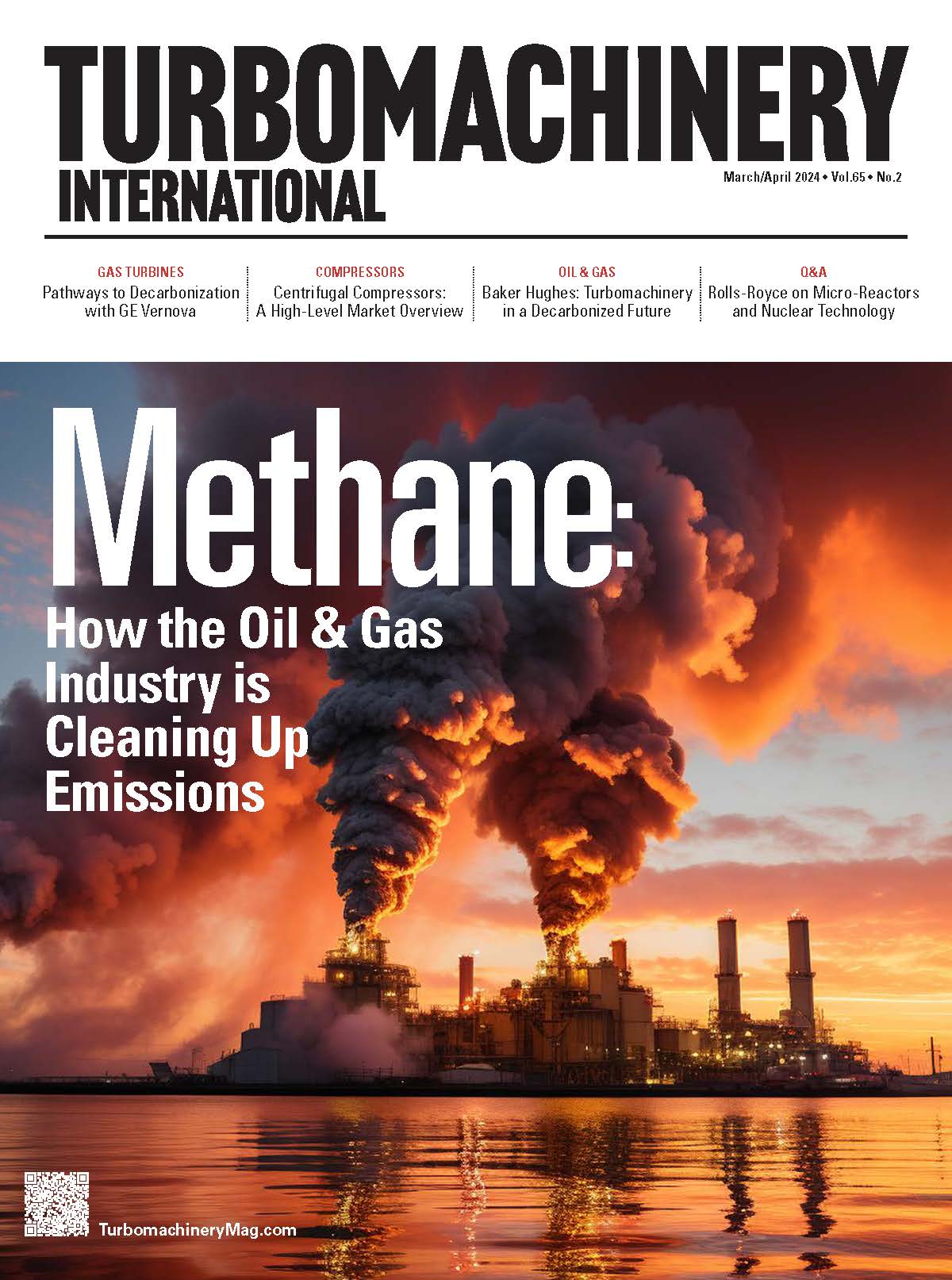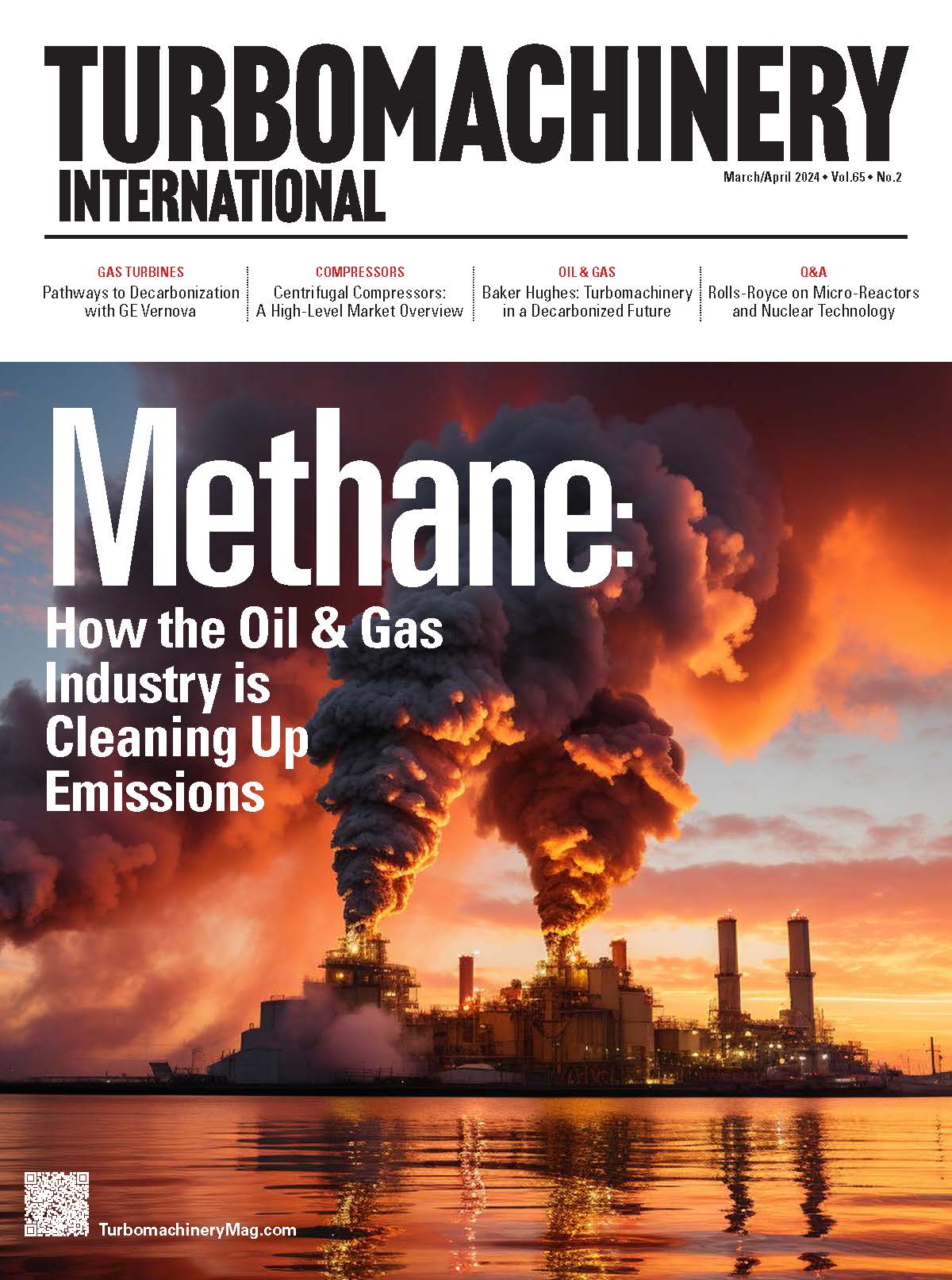Turbomachinery International: March/April 2024
The March/April 2024 issue features insight into how the oil and gas industry is reducing methane emissions, a micro-reactor Q&A with Rolls-Royce, a discussion with GE Vernova on decarbonization, and more.
Turbomachinery International’s March/April 2024 features a collection of the industry’s latest news and products, meeting coverage, and several feature articles on a range of topics.
The cover story, Methane: How the Oil & Gas Industry is Cleaning up Emissions, dives into the numerous technologies being deployed to abate methane emissions, including the latest updates from the Environmental Protection Agency (EPA) and the International Energy Agency (IEA), a deep dive into smart technologies such as Teledyne FLIR optical gas imaging cameras, a look at Chevon’s site design in Colorado, insights from Duke Energy’s Integrated Methane-Monitoring Platform, and much more.

Drew Robb, former editor of Turbomachinery International, reports on the Baker Hughes Annual Meeting (AM), in which the industry voiced its views on LNG updates, carbon capture, the journey to net zero, and more. A series of turbomachinery orders and plans from QatarEnergy LNG to expand its natural gas were also presented at the AM.
An interview with Jeffrey Goldmeer, Global Hydrogen Value Chain Leader at GE Vernova, lays out GE Vernova’s current decarbonization efforts and offers a snapshot of what’s happening in terms of technology, infrastructure, and lower carbon fuels.
Our Q&A with Rolls-Royce gives an inside look into the company’s journey in developing its micro-reactor technology and nuclear energy for space and terrestrial applications. James Montgomery and John Mason of Rolls-Royce differentiate between micro-reactors and SMRs, explain the design and advantages of micro-reactors, and discuss the future of nuclear fuel for sustainable generation.
In Centrifugal Compressors: The ‘Business End’ of Many Critical Industries, Anthony Brough P.E. and Tony Ruegger provide a comprehensive overview of centrifugal compressor types, applications, OEMs, and market reports. The centrifugal compressors market is served by over 20 OEMs globally, according to the authors, producing over 2,000 units per year. In 2022, the value of this market (not including related aftermarket repairs) was approximately US$3.4 billion. Dora Partners & Company projects 2023 will have resulted in orders of approximately US$3.6 billion.
Amins Almasi’s Turbo Tips column offers a series of notes, guidelines, and potential challenges one may encounter in modern gas turbines. The challenges include material durability in high-temperature operation and the limiting factors of blade-tip speed. These challenges can be managed with internal air systems, tip shrouds, and proper clearance gaps. A case study for a 15 MW twin-shaft gas turbine demonstrated these concepts, as the turbine used a tip shroud and guide vanes to produce variable speeds from 5,600 – 10,000 rpm.
And Myth Busters Klaus Brun and Rainer Kurz address a myth about the ability of computational fluid dynamics (CFDs) to replace engineers in turbomachinery. The duo points out several shortcomings in the technology, such as the occasional mismatch between CFD and test data results and difficulty adjusting to customized machinery. Engineers must be relied upon to interpret CFD data and adjust the parameters of its operation, ensuring the technology’s accuracy manually.
